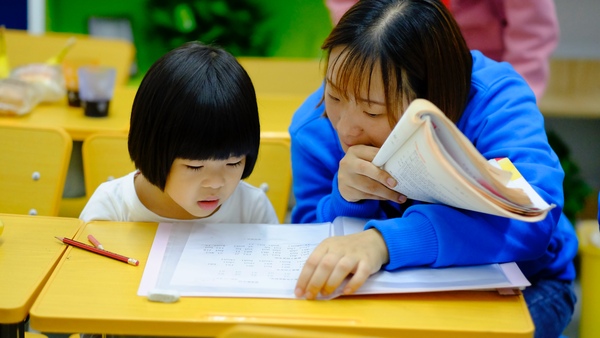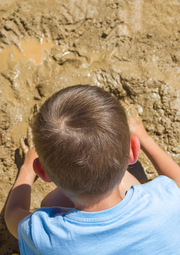7 Fun and Easy Ways to Learn a Language Alongside Your Kids
We understand — picking up a new language can be taxing, exasperating, and occasionally exceedingly tough. And determining the most effective method to learn a new language. It appears almost unachievable. Various scientific principles, theories, and learning styles are scattered about, and honestly, some languages are simpler to learn than others.
Maybe you’re proficient in French conversation, but writing in Spanish is a no-go. Despite these hurdles, the trend of learning multiple languages is swiftly escalating worldwide, and bilingualism is progressively becoming a prized asset on resumes.
Here are 7 ways to learn a language alongside your kids.
Watch a Movie
For those interested in an effective method of learning a new language without leaving their home, consider watching a foreign film in a different language – no subtitles if possible. This approach enhances your language learning experience and deepens your understanding of the culture associated with that language.
If you’re still learning and need the subtitles, note unfamiliar words and their possible meanings to look up later. After all, discovering new words can be exciting! (Extra tip: If you feel confident and ready to take your language learning a step further, why not venture out and watch a foreign movie at a cinema!)
Take Online Lessons, e.g. in German
Consider exploring Lingoda for your online German lessons needs. This platform is designed to elevate your language acquisition skills. It offers a variety of languages, including German, Korean, Japanese, Chinese, Spanish, French among others.
Professional language educators meticulously curate the course content, and the website has an integrated flashcard feature. Moreover, understanding that fluency in a new language entails speaking it, Lingoda incorporates narratives for you to read aloud, thus hastening your proficiency.
Seek Out a Pen Pal
When your child has aged a little and grasped the essentials of a foreign language, connecting with a pen pal can be an excellent strategy to hone their language skills and foster a sense of independence.
The thrill of a hand-written letter delivered by air mail landing on the doormat (an increasingly uncommon event these days), or an email popping up in their Inbox, can inspire an enthusiastic bout of return correspondence.
Additionally, having an overseas pen pal provides a unique opportunity to explore another culture and understand the variances in lifestyle aspects like schooling, diet, holidays, hobbies, etc. This exemplifies how language immersion can aid your child in broadening their horizons.
Storytelling
Storybooks undeniably offer a wealth of amusement, but swapping tales – whether they’re based in reality or purely the product of imagination – can serve as an excellent opportunity to deepen your connection with your children and foster their communicative abilities.
Pick up children’s books in other languages at the library or purchase them from a bookstore. Discuss stories drawn from everyday occurrences. Expand their imaginative horizons with whimsical narratives and encourage the blossoming of their creative potential as you concoct stories about all aspects of their environment.

Use Rhymes
Leveraging rhymes can be an effective method to assist your child in acquiring a new language. Every language has rhymes – be it nursery rhymes for the little ones or more sophisticated rhymes for older children. Experimenting with poetry could also prove beneficial!
A rhyme creates a memorable pattern due to the similarity in sound at the end of each line. A known word in a line might rhyme with a new one, making the unfamiliar word easier to remember because of its association with the known one.
Moreover, much like songs and stories, rhymes captivate your child’s imagination, playing a crucial role in memorizing new vocabulary. While your child might not consciously realize it, the words from these rhymes are steadily being etched into their memory.
Encourage Your Child to Start Drawing
This task involves guiding your child to sketch an image based on the description you provide. Initially, you must establish what they will draw specifically – it could be a little girl, a building, or a vehicle. Following that, you will meticulously explain the various components of the sketch and their appearance in the target language. For instance:
Sketch a lofty, slender building with three large windows and a golden entrance. The top should be rosy, and a tiny, ebony bird should be perched on it.
If your child encounters an unfamiliar word, you can mime it and have them guess its meaning. Aim to minimize the use of your mother tongue to optimize the benefits of this exercise.
Tune Into the Radio
Like viewing an international film, consider tuning in to a radio station that broadcasts in the language you’re trying to learn. You can do this while driving, through a podcast, or online.
Attempt to gauge your comprehension level and jot down any familiar yet unclear words for further research. A valuable tip: Listening to news broadcasts in a different language is a highly effective and intense method to quickly pick up vocabulary and sentence structures.
Endnote
Utilizing words to their fullest can be incredibly enjoyable. They have the potential to create stories, songs, and a myriad of other elements that can enhance your children’s eloquence. Foster a positive and engaging learning space to inspire your children to express themselves effectively. This will not only unleash their creativity but also expand their language skills.








